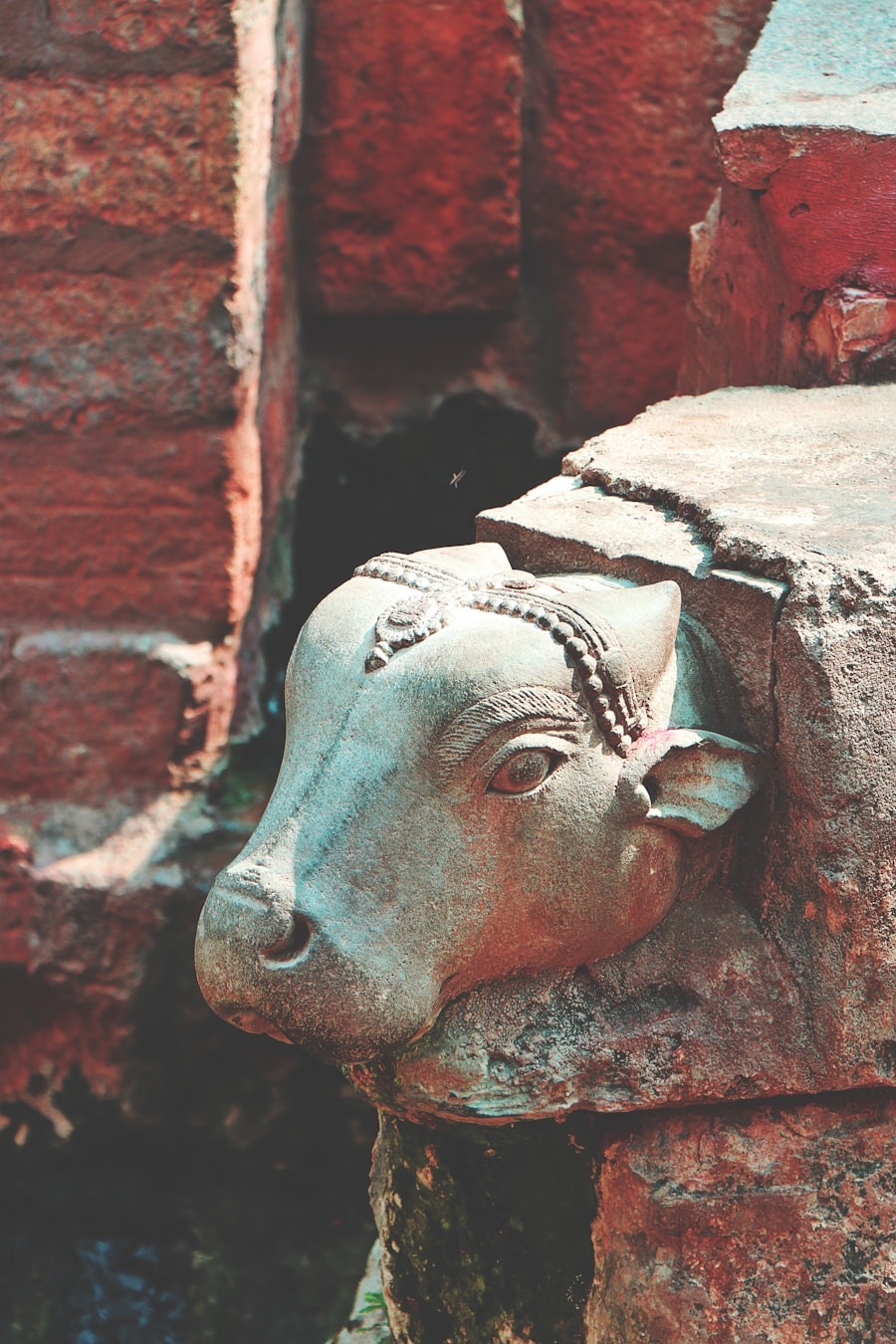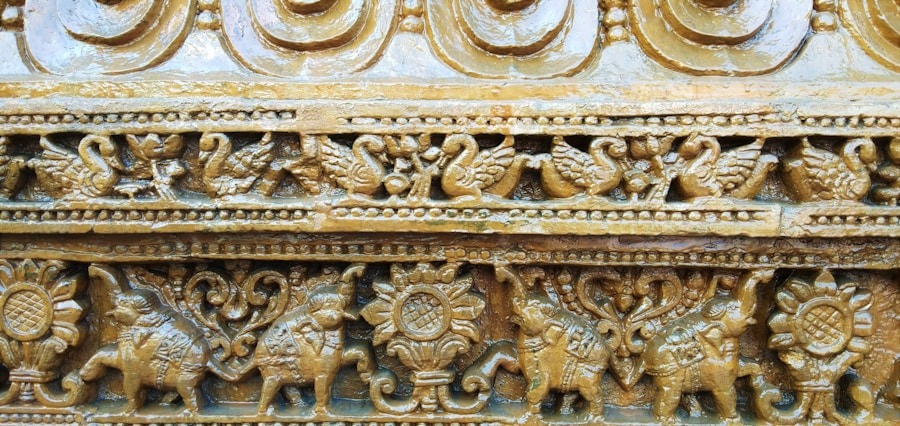The Gupta Empire, which flourished from approximately 320 to 550 CE, is often heralded as a golden age in Indian history.
The empire was founded by Maharaja Sri Gupta and reached its zenith under the reign of Chandragupta II, also known as Vikramaditya.
The Gupta Empire’s influence extended across much of the Indian subcontinent, encompassing modern-day India, Pakistan, and Bangladesh. Its political structure was marked by a decentralized administration that allowed local rulers considerable autonomy while still recognizing the Gupta emperor’s supremacy. The Gupta Empire is particularly notable for its cultural and intellectual achievements, which have had a lasting impact on Indian civilization and beyond.
The period saw the emergence of classical Sanskrit literature, with poets and playwrights like Kalidasa producing works that are still celebrated today. Additionally, the Gupta era is recognized for its advancements in mathematics, including the concept of zero and the decimal system, which laid the groundwork for modern arithmetic. The empire’s capitals, particularly Pataliputra and Ujjain, served as vibrant centers of political power and cultural exchange, facilitating the flourishing of ideas and artistic expression.
Key Takeaways
- The Gupta Empire was a powerful ancient Indian empire that flourished from around 320 to 550 CE.
- The capitals of the Gupta Empire played a crucial role in the administration, trade, and cultural development of the empire.
- The Gupta Empire capitals were centers of cultural achievements and influences, including art, architecture, literature, and religion.
- The Gupta Empire capitals were also hubs of intellectual and scientific advancements, particularly in the fields of mathematics, astronomy, and medicine.
- The legacy of the Gupta Empire capitals can be seen in their lasting impact on Indian culture, art, and scientific knowledge, and their influence on subsequent empires and civilizations.
The Role of Capitals in the Gupta Empire
The Capitals of the Gupta Empire
The Primary Capital: Pataliputra
Pataliputra, situated at the confluence of the Ganges and Son rivers, served as the primary capital during much of the empire’s existence. This strategic location not only facilitated trade and commerce but also made it a melting pot of diverse cultures and ideas.
A Center for Architecture, Learning, and Scholarship
The city was renowned for its impressive architecture, including grand palaces and stupas, which reflected the empire’s wealth and artistic prowess. Pataliputra was not merely a political hub; it was also a center for learning and scholarship, attracting intellectuals from various regions.
Ujjain: The Astronomical and Pilgrimage Hub
Ujjain, another significant capital of the Gupta Empire, was known for its astronomical observatories and as a major pilgrimage site. The city was strategically located on trade routes connecting northern and southern India, enhancing its economic importance. Ujjain was also home to the famous Mahakaleshwar Temple, dedicated to Lord Shiva, which attracted pilgrims and scholars alike.
Cultural Achievements and Influences in Gupta Empire Capitals

The cultural achievements during the Gupta Empire were profound and far-reaching, with both Pataliputra and Ujjain serving as epicenters of artistic expression. In Pataliputra, the court of Chandragupta II became a patron of the arts, fostering an environment where literature and performance thrived. The works of Kalidasa, such as “Shakuntala,” exemplify the literary brilliance of this era.
His plays often explored themes of love and nature, employing rich imagery and sophisticated language that resonated with audiences across generations. The Gupta period also saw advancements in sculpture and painting, with intricate carvings adorning temples and stupas that depicted scenes from Hindu mythology. Ujjain contributed significantly to the cultural tapestry of the Gupta Empire through its festivals and religious practices.
The city hosted the Kumbh Mela, one of the largest religious gatherings in the world, which attracted devotees from all over India. This festival not only reinforced religious beliefs but also facilitated cultural exchanges among diverse communities. The architectural marvels in Ujjain, such as the Mahakaleshwar Temple, showcased exquisite craftsmanship that blended religious devotion with artistic innovation.
The cultural vibrancy of both capitals fostered a sense of unity among the diverse populations within the empire while simultaneously allowing for regional variations in artistic expression.
Intellectual and Scientific Advancements in Gupta Empire Capitals
The Gupta Empire is often celebrated for its remarkable contributions to intellectual thought and scientific inquiry, particularly in its capitals. Pataliputra emerged as a hub for scholars and philosophers who engaged in discussions on various subjects ranging from astronomy to medicine. One of the most notable figures from this period is Aryabhata, an eminent mathematician and astronomer who made groundbreaking contributions to mathematics.
His work “Aryabhatiya” introduced concepts such as the approximation of pi and methods for calculating square roots. Aryabhata’s influence extended beyond India; his ideas were later transmitted to the Islamic world and Europe. In Ujjain, advancements in astronomy were particularly pronounced due to its association with celestial observations.
The city was home to several observatories where scholars meticulously studied planetary movements and developed sophisticated calendars. Varahamihira, another prominent figure associated with Ujjain, made significant strides in astrology and meteorology. His treatise “Brihat Samhita” encompassed a wide range of topics including agriculture, architecture, and even animal husbandry.
The intellectual climate fostered by these capitals not only advanced scientific knowledge but also laid the groundwork for future generations of scholars who would build upon these foundational ideas.
Legacy of Gupta Empire Capitals
The legacy of the Gupta Empire’s capitals extends far beyond their immediate historical context; they have left an indelible mark on Indian culture and civilization. Pataliputra’s architectural innovations influenced subsequent urban planning in Indian cities, setting standards for civic design that emphasized aesthetics alongside functionality. The city’s role as a center for learning established a tradition of scholarship that continued well into later periods, inspiring future generations of thinkers and artists.
Ujjain’s significance as a pilgrimage site has endured through centuries, with its religious festivals continuing to attract millions of devotees today.
Furthermore, the scientific advancements made during this era laid foundational principles that would later be integrated into various fields across cultures.
The concepts developed by mathematicians like Aryabhata continue to be relevant in contemporary mathematics and astronomy.
Comparison with Other Ancient Empires’ Capitals

When comparing the capitals of the Gupta Empire with those of other ancient empires such as Rome or Persia, distinct differences emerge in terms of governance, culture, and intellectual pursuits. The Roman capital of Rome was characterized by its centralized authority and extensive infrastructure that facilitated trade across vast territories. In contrast, while Pataliputra served as a central hub for governance within the Gupta Empire, local rulers maintained significant autonomy, allowing for a more decentralized approach to administration.
Culturally, Rome’s emphasis on monumental architecture like the Colosseum showcased its imperial power through grand public spectacles. In comparison, Gupta capitals like Pataliputra focused on creating spaces that fostered learning and artistic expression rather than solely emphasizing military might or political dominance. Similarly, while Persian capitals such as Persepolis were designed to reflect imperial grandeur through their monumental palaces and reliefs depicting royal achievements, Gupta capitals prioritized cultural synthesis and intellectual discourse.
In terms of intellectual advancements, both the Gupta Empire and ancient Greece made significant contributions to philosophy and science; however, their approaches differed markedly. While Greek philosophers like Aristotle emphasized empirical observation and logical reasoning, Indian scholars during the Gupta period integrated spiritual perspectives into their scientific inquiries. This synthesis resulted in unique contributions to mathematics and astronomy that were distinct from those developed in other ancient civilizations.
The capitals of these empires serve as reflections of their respective societies’ values and priorities—whether it be military prowess in Rome or cultural richness in Gupta India—highlighting how geography, governance structures, and cultural exchanges shaped their development over time.
The Gupta Empire was known for its flourishing capitals that served as cultural and intellectual hubs, attracting scholars, artists, and thinkers from far and wide. This article explores the significance of capitals in fostering creativity and innovation during the Gupta Empire’s reign. For further reading on the challenges faced by state and society in maintaining communalism and secularism, check out this insightful article.
FAQs
What was the Gupta Empire?
The Gupta Empire was an ancient Indian empire that existed from approximately 320 to 550 CE. It is known for its political stability, economic prosperity, and cultural achievements.
What were the capitals of the Gupta Empire?
The Gupta Empire had multiple capitals throughout its history. The primary capitals were Pataliputra, present-day Patna, and later Ujjain. Other important cities included Ayodhya, Prayaga, and Mathura.
How did the capitals of the Gupta Empire serve as cultural and intellectual hubs?
The capitals of the Gupta Empire were centers of learning, art, and literature. They attracted scholars, artists, and intellectuals from across India and beyond, leading to a flourishing of cultural and intellectual activities.
What were some of the cultural and intellectual achievements of the Gupta Empire?
During the Gupta period, significant advancements were made in the fields of mathematics, astronomy, medicine, and literature. The Gupta Empire also produced remarkable works of art and architecture, including the famous Iron Pillar of Delhi and the Ajanta and Ellora caves.
How did the Gupta Empire contribute to the spread of Hinduism and Buddhism?
The Gupta Empire played a crucial role in the patronage and promotion of Hinduism and Buddhism. The rulers of the Gupta dynasty were known for their support of these religions, which led to the construction of numerous temples, monasteries, and stupas.






















+ There are no comments
Add yours